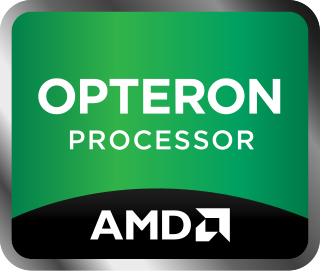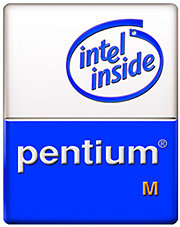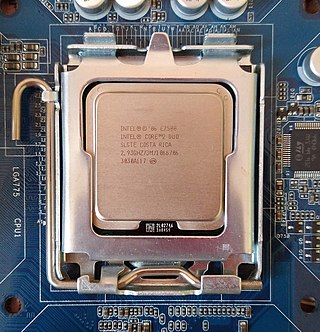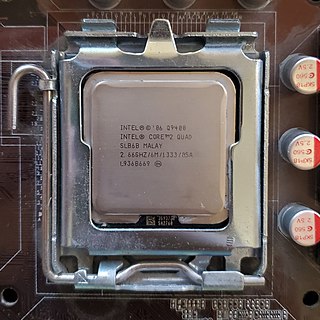This article has multiple issues. Please help improve it or discuss these issues on the talk page . (Learn how and when to remove these template messages)
|
The Itanium from Intel is a high-end server and supercomputer microprocessor.
This article has multiple issues. Please help improve it or discuss these issues on the talk page . (Learn how and when to remove these template messages)
|
The Itanium from Intel is a high-end server and supercomputer microprocessor.
Steppings: C0, C1 and C2. CPUID: 0007000604h (stepping C0), 0007000704h (stepping C1) or 0007000804h (stepping C2). Transistor count: 25.4 million for CPU, 295 million for the external L3 cache. The FSB data bus is 64 bits wide, not 128 like in Itanium 2.
| Model | S-Spec number | Clock speed | Cache | FSB speed | Voltage | TDP (W) | Socket | Release date | Price | |
|---|---|---|---|---|---|---|---|---|---|---|
| L2 | L3 | |||||||||
| Itanium 733 MHz 2 MB | SL4LT, SL5VS, SL6RH | 733 MHz | 96 KB | 2 MB | 266 MT/s | 1.25–1.6 V | 116 | PAC418 | 2001-05-29 | $1,177 |
| Itanium 733 MHz 4 MB | SL4LS, SL5VT | 4 MB | 130 | $4,227 | ||||||
| Itanium 800 MHz 2 MB | SL4LR, SL5VU, SL6RK | 800 MHz | 2 MB | 116 | $1,980 | |||||
| Itanium 800 MHz 4 MB | SL4LQ, SL5VW, SL6RL | 4 MB | 130 | $4,227 | ||||||
Itanium 2 uses socket PAC611 with a 128 bit wide FSB. The 90 nm CPUs (9000 and 9100 series) bring dual-core chips and an updated microarchitecture adding multithreading and splitting the L2 cache into a 256 KB data cache and 1 MB instruction cache per core (the pre-9000 series L2 cache being a 256 KB common cache). All Itaniums except some 130 nm models are capable of >2-socket SMP.
Stepping: B3. Die size: 421 mm2. Transistor count: 221 million. CPUID: 001F000704h
| Model [lower-alpha 1] | S-Spec number | Clock speed | Cache | FSB speed | Voltage | TDP [lower-alpha 2] (W) | Release date | Price | |
|---|---|---|---|---|---|---|---|---|---|
| L2 | L3 | ||||||||
| Itanium 2 900 MHz 1.5 MB | SL67W, SL6P6 | 900 MHz | 256 KB | 1.5 MB | 400 MT/s | 1.5 V | 90 | 2002-07-08 | $1,338 |
| Itanium 2 1.0 GHz 1.5 MB | SL67U, SL6P5 | 1000 MHz | 100 | $2,247 | |||||
| Itanium 2 1.0 GHz 3 MB | SL67V, SL6P7 | 3 MB | $4,226 | ||||||
Stepping: B1. Die size: 374 mm2. Transistor count: 410 million. CPUID: 001F010504h.
The Madison 9M table contains the 4MB and 6MB successors of the first Madisons.
| Model [lower-alpha 3] | S-Spec number | Clock speed | Cache | FSB speed | SMP | Voltage | TDP [lower-alpha 4] (W) | Release date | Price | |
|---|---|---|---|---|---|---|---|---|---|---|
| L2 | L3 | |||||||||
| Itanium 2 1.3 GHz 3 MB | SL6XD | 1300 MHz | 256 KB | 3 MB | 400 MT/s | MP | 1.3 V | 97 | 2003-06-30 | $1,338 |
| Itanium 2 1.4 GHz 4 MB | SL6XE | 1400 MHz | 4 MB | 91 | $2,247 | |||||
| Itanium 2 1.5 GHz 6 MB | SL6XF | 1500 MHz | 6 MB | 107 | $4,226 | |||||
| Itanium 2 1.4 GHz 1.5 MB | SL76K | 1400 MHz | 1.5 MB | DP | 91 | 2003-09-08 | $1,172 | |||
| Itanium 2 1.4 GHz 3 MB | SL7FP | 3 MB | 2004-04-13 | $1,172 | ||||||
| Itanium 2 1.6 GHz 3 MB [lower-alpha 5] | SL7FQ | 1600 MHz | 99 | $2,408 | ||||||
The same chip as Madison, but at a lower voltage.
| Model [lower-alpha 6] | S-Spec number | Clock speed | Cache | FSB speed | SMP | Voltage | TDP (W) | Release date | Price | |
|---|---|---|---|---|---|---|---|---|---|---|
| L2 | L3 | |||||||||
| LV Itanium 2 1.0 GHz 1.5 MB | SL754 | 1000 MHz | 256 KB | 1.5 MB | 400 MT/s | DP | 1.1 V | 55 [lower-alpha 7] | 2003-09-08 | $744 |
Steppings: A1 and A2. Die size: 432 mm2. Transistor count: 592 million. CPUID: 001F020104h (stepping A1) or 001F020204h (stepping A2).
9M is the chip of all the third generation Itanium 2s, irrespective of the amount of enabled cache. [5] [6]
| Model [lower-alpha 8] | S-Spec number | Clock speed | Cache | FSB speed | SMP | Voltage | TDP [lower-alpha 4] (W) | Release date | Price | |
|---|---|---|---|---|---|---|---|---|---|---|
| L2 | L3 | |||||||||
| Itanium 2 1.5 GHz 4 MB | SL7ED, SL8CX | 1500 MHz | 256 KB | 4 MB | 400 MT/s | MP | 1.3 V | 107 | 2004-11-08 | $910 |
| Itanium 2 1.6 GHz 6 MB | SL7EB, SL8CV | 1600 MHz | 6 MB | 122 | $1,980 | |||||
| Itanium 2 1.6 GHz 9 MB | SL87H, SL8CU | 9 MB | $4,226 | |||||||
| Itanium 2 1.6 GHz 6 MB | SL93X | 6 MB | 533 MT/s | 2006-2? [7] | ||||||
| Itanium 2 1.6 GHz 9 MB | SL93W | 9 MB | ||||||||
| Itanium 2 1.66 GHz 6 MB | SL8JK | 1666 MHz | 6 MB | 667 MT/s | 2005-07-18 | $2194 | ||||
| Itanium 2 1.66 GHz 9 MB | SL8JJ | 9 MB | $4,655 | |||||||
The same chip as Madison 9M, but restricted to 2-socket and uniprocessor systems.
| Model [lower-alpha 9] | S-Spec number | Clock speed | Cache | FSB speed | SMP | Voltage | TDP (W) | Release date | Price | |
|---|---|---|---|---|---|---|---|---|---|---|
| L2 | L3 | |||||||||
| LV Itanium 2 1.3 GHz 3 MB | SL7SD, SL8CY | 1300 MHz | 256 KB | 3 MB | 400 MT/s | DP | 62 | 2004-11-08 | $530 | |
| Itanium 2 1.6 GHz 3 MB [lower-alpha 10] | SL7EC, SL8CW | 1600 MHz | 1.3 V | 99 | $851 | |||||
| Itanium 2 1.6 GHz 3 MB | SL7EF, SL8CZ | 533 MT/s | $1,172 | |||||||
This multi-chip module codenamed Hondo is not an Intel product, but a separate project of Hewlett-Packard to pack two CPUs onto one PAC611 socket. The S-Spec SL75Z was assigned to the chips that Intel sent to HP for use in mx2.
| Model | Clock speed | Cache | FSB speed | SMP | Cores | Voltage | TDP (W) | Release date | ||
|---|---|---|---|---|---|---|---|---|---|---|
| L2 | L3 | L4 | ||||||||
| HP mx2 [8] | 1100 MHz | 2×256 KB | 2×4 MB | 32 MB | 400 MT/s | MP | 2 | 1.1 V [9] | 170 [10] | 2004-06 [12] |
Steppings: C1 and C2. Die size: 596 mm2. Transistor count: 1720 million. CPUID: 0020000504h (stepping C1) or 0020000704h (stepping C2).
All processors can support the legacy 400 MT/s FSB. [13] From Montecito onwards all Itaniums are MP-capable.
| Model number | Clock speed | Cache | FSB speed | Multiplier | Cores | Threads per core | Voltage | TDP (W) | Socket | Release date | Price (USD) | |
|---|---|---|---|---|---|---|---|---|---|---|---|---|
| L2 | L3 | |||||||||||
| Itanium 2 9010 | 1.6 GHz | 256 KB D + 1 MB I | 6 MB | 533 MHz | 12× | 1 | 1 | 1.0875–1.25 V | 75 W | PPGA611 | 2006-07-18 | $696 |
| Itanium 2 9015 | 1.4 GHz | 2×6 MB | 400 MHz | 14× | 2 | 2 | 104 W | $749 | ||||
| Itanium 2 9020 | 1.42 GHz | 2×6 MB | 533 MHz | 10.5× | $910 | |||||||
| Itanium 2 9030 | 1.6 GHz | 2×4 MB | 12× | 1 | $1552 | |||||||
| Itanium 2 9040 | 2×9 MB | 2 | $1980 | |||||||||
| Itanium 2 9050 | 2×12 MB | $3692 | ||||||||||
The chip is similar to Montecito, but the stepping is A1 and the CPUID is 0020010104h. The models with 533 MT/s FSB also support 400 MT/s FSB operation. [14] The processors with the Core level Lock-Step error correction feature were released only in 2008. [15] Even though Intel does not use the "Itanium 2" branding for the 9100-series, it's still grouped with Itanium 2 processors because it uses the same platform and is a minor update on the 9000-series.
| Model number | Clock speed | Cache | FSB speed | Multiplier | Cores | Threads per core | Voltage | TDP (W) | Socket | Release date | Price (USD) | |
|---|---|---|---|---|---|---|---|---|---|---|---|---|
| L2 | L3 | |||||||||||
| Itanium 9110N | 1.6 GHz | 256 KB D + 1 MB I | 12 MB | 533 MHz | 12× | 1 | 1 | 1.0875–1.25 V | 75 W | PPGA611 | 2007-10-31 | $696 |
| Itanium 9120N | 1.42 GHz | 2×6 MB | 533 MHz | 10.5× | 2 | 2 | 104 W | $910 | ||||
| Itanium 9130M | 1.66 GHz | 2×4 MB | 667 MHz | 10× | 1 | $1552 | ||||||
| Itanium 9140N | 1.6 GHz | 2×9 MB | 533 MHz | 12× | 2 | $1980 | ||||||
| Itanium 9140M | 1.66 GHz | 2×9 MB | 667 MHz | 10× | $1980 | |||||||
| Itanium 9150N | 1.6 GHz | 2×12 MB | 533 MHz | 12× | $3692 | |||||||
| Itanium 9150M | 1.66 GHz | 2×12 MB | 667 MHz | 10× | $3692 | |||||||
| Itanium 9152M | 1.66 GHz | 2×12 MB | 667 MHz | 10× | ||||||||
These later generations of Itanium use socket LGA 1248, the QuickPath Interconnect and Scalable Memory Interconnect having replaced the Front-Side Bus used by Itanium 2.
Stepping: E0. Die size: 699 mm2. Transistor count: 2046 million. CPUID: 0020020404.
All models support: XD bit (an NX bit implementation), Hyper-threading, Turbo Boost, VT-i2 (Itanium Virtualization technology), Intel VT-d, RAS with Advanced Machine Check Architecture, Cache Safe technology, Enhanced Demand Based Switching, ECC, two memory controllers each with two SMI links to memory buffers for DDR3, for a combined memory bandwidth of 34 GB/s and capacity of 256 GB. The QPI bandwidth is 96 GB/s for cache coherency and 24 GB/s for I/O.
| Model number | Clock speed | Cache | QuickPath | Cores | Threads per core | Voltage | TDP (W) | Socket | Release date | Price (USD) | ||
|---|---|---|---|---|---|---|---|---|---|---|---|---|
| Clock speed | Turbo Boost | L2 | L3 | |||||||||
| Itanium 9310 | 1.60 GHz | — | 256 KiB D + 512 KiB I | 2×5 MiB | 4.8 GT/s | 2 | 2 | 0.8–1.35 V | 130W | LGA1248 | 2010-02-08 | $946 |
| Itanium 9320 | 1.33 GHz | 1.46 GHz | 4×4 MiB | 4 | 155W | $1614 | ||||||
| Itanium 9330 | 1.46 GHz | 1.60 GHz | 4×5 MiB | $2059 | ||||||||
| Itanium 9340 | 1.60 GHz | 1.73 GHz | 185W | $2059 | ||||||||
| Itanium 9350 | 1.73 GHz | 1.86 GHz | 4×6 MiB | $3838 | ||||||||
Stepping: D0. Die size: 544 mm2. Transistor count: 3.1 billion. CPUID: 0021000404.
All models support: Itanium New Instructions, [16] XD bit (an NX bit implementation), Intel VT-x, Intel VT-d, VT-i3 (Itanium Virtualization technology), Hyper-threading (with Dual-Domain Multithreading), Turbo Boost, Enhanced Intel SpeedStep Technology (EIST), Cache-Safe technology, RAS with Advanced Machine Check Architecture, Instruction Replay technology, ECC, two memory controllers each with two SMI links to memory buffers for DDR3, for a combined memory bandwidth of 45 GB/s and capacity of 512 GB. The QPI bandwidth is 128 GB/s for cache coherency and 32 GB/s for I/O.
| Model number | Clock speed | Cache | QuickPath | Cores | Threads per core | Voltage | TDP (W) | Socket | Release date | Price (USD) | ||
|---|---|---|---|---|---|---|---|---|---|---|---|---|
| Clock Speed | Turbo-boost | L2 | L3 | |||||||||
| Itanium 9520 | 1.73 GHz | 256 KiB D + 512 KiB I | 20 MiB | 6.4 GT/s | 4 | 2 | 0.85-1.2 V | 130W | LGA1248 | 2012-11-08 | $1350 | |
| Itanium 9540 | 2.13 GHz | 24 MiB | 8 | 170W | $2650 | |||||||
| Itanium 9550 | 2.4 GHz | 32 MiB | 4 | $3750 | ||||||||
| Itanium 9560 | 2.53 GHz | 8 | $4650 | |||||||||
The 9700 series, despite nominally having a different stepping (E0 with CPUID 0021000504), is functionally identical with the 9500 series, even having exactly the same bugs, the only difference being the 133 MHz higher frequency of 9760 and 9750 over 9560 and 9550 respectively. [17] Intel had committed to at least one more generation after Poulson, first mentioning Kittson on 14 June 2007. [18] Kittson was supposed to be on a 22 nm process and use the same LGA2011 socket and platform as Xeons. [19] [20] [21] On 31 January 2013 Intel issued an update to their plans for Kittson: it would have the same LGA1248 socket and 32 nm process as Poulson, effectively halting any further development of Itanium processors. [22]
| Model number | Clock speed | Cache | QuickPath | Cores | Threads per core | Voltage | TDP (W) | Socket | Release date | Price (USD) | ||
|---|---|---|---|---|---|---|---|---|---|---|---|---|
| Clock Speed | Turbo-boost | L2 | L3 | |||||||||
| Itanium 9720 | 1.73 GHz | 256 KiB D + 512 KiB I | 20 MiB | 6.4 GT/s | 4 | 2 | 0.85-1.2 V | 130W | LGA1248 | 2017-05-11 | $1350 | |
| Itanium 9740 | 2.13 GHz | 24 MiB | 8 | 170W | $2650 | |||||||
| Itanium 9750 | 2.53 GHz | 32 MiB | 4 | $3750 | ||||||||
| Itanium 9760 | 2.66 GHz | 8 | $4650 | |||||||||

Itanium is a discontinued family of 64-bit Intel microprocessors that implement the Intel Itanium architecture. The Itanium architecture originated at Hewlett-Packard (HP), and was later jointly developed by HP and Intel. Launched in June 2001, Intel initially marketed the processors for enterprise servers and high-performance computing systems. In the concept phase, engineers said "we could run circles around PowerPC...we could kill the x86." Early predictions were that IA-64 would expand to the lower-end servers, supplanting Xeon, and eventually penetrate into the personal computers, eventually to supplant reduced instruction set computing (RISC) and complex instruction set computing (CISC) architectures for all general-purpose applications.

Celeron is a discontinued series of low-end IA-32 and x86-64 computer microprocessor models targeted at low-cost personal computers, manufactured by Intel. The first Celeron-branded CPU was introduced on April 15, 1998, and was based on the Pentium II.

Pentium 4 is a series of single-core CPUs for desktops, laptops and entry-level servers manufactured by Intel. The processors were shipped from November 20, 2000 until August 8, 2008. It was removed from the official price lists starting in 2010, being replaced by Pentium Dual-Core.

The Pentium II brand refers to Intel's sixth-generation microarchitecture ("P6") and x86-compatible microprocessors introduced on May 7, 1997. Containing 7.5 million transistors, the Pentium II featured an improved version of the first P6-generation core of the Pentium Pro, which contained 5.5 million transistors. However, its L2 cache subsystem was a downgrade when compared to the Pentium Pros. It is a single-core microprocessor.

The Pentium III brand refers to Intel's 32-bit x86 desktop and mobile CPUs based on the sixth-generation P6 microarchitecture introduced on February 28, 1999. The brand's initial processors were very similar to the earlier Pentium II-branded processors. The most notable differences were the addition of the Streaming SIMD Extensions (SSE) instruction set, and the introduction of a controversial serial number embedded in the chip during manufacturing. The Pentium III is also a single-core processor.

Opteron is AMD's x86 former server and workstation processor line, and was the first processor which supported the AMD64 instruction set architecture. It was released on April 22, 2003, with the SledgeHammer core (K8) and was intended to compete in the server and workstation markets, particularly in the same segment as the Intel Xeon processor. Processors based on the AMD K10 microarchitecture were announced on September 10, 2007, featuring a new quad-core configuration. The last released Opteron CPUs are the Piledriver-based Opteron 4300 and 6300 series processors, codenamed "Seoul" and "Abu Dhabi" respectively.

The Pentium M is a family of mobile 32-bit single-core x86 microprocessors introduced in March 2003 and forming a part of the Intel Carmel notebook platform under the then new Centrino brand. The Pentium M processors had a maximum thermal design power (TDP) of 5–27 W depending on the model, and were intended for use in laptops. They evolved from the core of the last Pentium III–branded CPU by adding the front-side bus (FSB) interface of Pentium 4, an improved instruction decoding and issuing front end, improved branch prediction, SSE2 support, and a much larger cache.

Xeon is a brand of x86 microprocessors designed, manufactured, and marketed by Intel, targeted at the non-consumer workstation, server, and embedded markets. It was introduced in June 1998. Xeon processors are based on the same architecture as regular desktop-grade CPUs, but have advanced features such as support for error correction code (ECC) memory, higher core counts, more PCI Express lanes, support for larger amounts of RAM, larger cache memory and extra provision for enterprise-grade reliability, availability and serviceability (RAS) features responsible for handling hardware exceptions through the Machine Check Architecture (MCA). They are often capable of safely continuing execution where a normal processor cannot due to these extra RAS features, depending on the type and severity of the machine-check exception (MCE). Some also support multi-socket systems with two, four, or eight sockets through use of the Ultra Path Interconnect (UPI) bus, which replaced the older QuickPath Interconnect (QPI) bus.
Montecito is the code-name of a major release of Intel's Itanium 2 Processor Family (IPF), which implements the Intel Itanium architecture on a dual-core processor. It was officially launched by Intel on July 18, 2006 as the "Dual-Core Intel Itanium 2 processor". According to Intel, Montecito doubles performance versus the previous, single-core Itanium 2 processor, and reduces power consumption by about 20%. It also adds multi-threading capabilities, a greatly expanded cache subsystem, and silicon support for virtualization.
The Intel Core microarchitecture is a multi-core processor microarchitecture launched by Intel in mid-2006. It is a major evolution over the Yonah, the previous iteration of the P6 microarchitecture series which started in 1995 with Pentium Pro. It also replaced the NetBurst microarchitecture, which suffered from high power consumption and heat intensity due to an inefficient pipeline designed for high clock rate. In early 2004 the new version of NetBurst (Prescott) needed very high power to reach the clocks it needed for competitive performance, making it unsuitable for the shift to dual/multi-core CPUs. On May 7, 2004 Intel confirmed the cancellation of the next NetBurst, Tejas and Jayhawk. Intel had been developing Merom, the 64-bit evolution of the Pentium M, since 2001, and decided to expand it to all market segments, replacing NetBurst in desktop computers and servers. It inherited from Pentium M the choice of a short and efficient pipeline, delivering superior performance despite not reaching the high clocks of NetBurst.

Pentium is a discontinued series of x86 architecture-compatible microprocessors produced by Intel. The original Pentium was first released on March 22, 1993. The name "Pentium" is originally derived from the Greek word pente (πεντε), meaning "five", a reference to the prior numeric naming convention of Intel's 80x86 processors (8086–80486), with the Latin ending -ium since the processor would otherwise have been named 80586 using that convention.

Conroe is the code name for many Intel processors sold as Core 2 Duo, Xeon, Pentium Dual-Core and Celeron. It was the first desktop processor to be based on the Core microarchitecture, replacing the NetBurst microarchitecture based Cedar Mill processor. It has product code 80557, which is shared with Allendale and Conroe-L that are very similar but have a smaller L2 cache. Conroe-L has only one processor core and a new CPUID model. The mobile version of Conroe is Merom, the dual-socket server version is Woodcrest, the quad-core desktop version is Kentsfield and the quad-core dual-socket version is Clovertown. Conroe was replaced by the 45 nm Wolfdale processor.

Wolfdale is the code name for a processor from Intel that is sold in varying configurations as Core 2 Duo, Celeron, Pentium and Xeon. In Intel's Tick-Tock cycle, the 2007/2008 "Tick" was Penryn microarchitecture, the shrink of the Merom microarchitecture to 45 nanometers as CPUID model 23. This replaced the Conroe processor with Wolfdale.

Yorkfield is the code name for some Intel processors sold as Core 2 Quad and Xeon. In Intel's Tick-Tock cycle, the 2007/2008 "Tick" was Penryn microarchitecture, the shrink of the Core microarchitecture to 45 nanometers as CPUID model 23, replacing Kentsfield, the previous model.
Bloomfield is the code name for Intel high-end desktop processors sold as Core i7-9xx and single-processor servers sold as Xeon 35xx., in almost identical configurations, replacing the earlier Yorkfield processors. The Bloomfield core is closely related to the dual-processor Gainestown, which has the same CPUID value of 0106Ax and which uses the same socket. Bloomfield uses a different socket than the later Lynnfield and Clarksfield processors based on the same 45 nm Nehalem microarchitecture, even though some of these share the same Intel Core i7 brand.
the power envelope of a standard Madison—170 watts in all, 130 watts for the processor and 40 watts for its voltage regulator